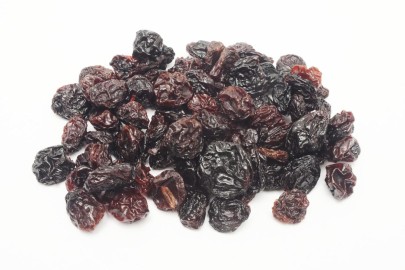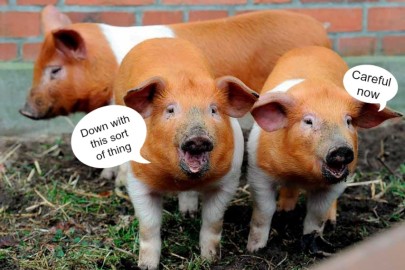This week’s wikipedia wierdness is indeed rather trivial, and made even more unusual by the voluminous amount of data devoted to serious discussion of something so meaningless. There are many thousands of words written on this nonsense so I have attempted to condense the key points for you here…
Toilet paper orientation concerns the debate over the advantages of whether toilet paper may hang over (in front of) or under (behind) the roll whilst on a holder. The choice is largely a matter of personal preference, dictated by habit. In surveys of American consumers and of bath and kitchen specialists, 60–70% of respondents prefer over.
Despite its being an apparently trivial topic, some people hold strong opinions on the matter. Defenders of either position cite advantages ranging from aesthetics, hospitality, and cleanliness to paper conservation, the ease of detaching individual squares, and compatibility with a recreational vehicle or a cat. Celebrities and experts are found on both sides. Some writers have proposed connections to age, sex, or political philosophy; and survey evidence has shown a correlation with socioeconomic status.
In the article “Bathroom Politics: Introducing Students to Sociological Thinking from the Bottom Up”, Eastern Institute of Technology sociology professor Edgar Alan Burns describes reasons why toilet paper politics is worthy of examination. Burns argues that there is a hidden lesson:
Sociologists are often concerned that their discipline is seen merely as an elaboration of the trivial or the obvious. Therefore, the theoretical point illustrated through the paper-hanging exercise is not that small-scale realities are the opposite of big picture sociology, but rather that the big picture does not exist separately “out there.” Minor details and “taken for granted” rules and beliefs are the built-in meta-narratives of society, and this is what makes them so powerful.
Similar everyday topics that have been used to awaken the sociological imagination include games of noughts and crosses, violations of personal space, the rules of walking, and the etiquette by which men choose urinals in public restrooms.
Morton Ann Gernsbacher, a professor of psychology at the University of Wisconsin–Madison, compares the orientation of toilet paper to the orientation of cutlery in a dishwasher, the choice of which drawer in a chest of drawers to place one’s socks, and the order of shampooing one’s hair and lathering one’s body in the shower. In each choice, there is a prototypical solution chosen by the majority, and it is tempting to offer simplistic explanations of how the minority must be different.
In the academic field of evaluation, Michael Scriven writes that the question of the correct way to insert toilet paper is a “one-item aptitude test” for measuring one’s evaluation skills. These skills include the evaluative attitude, practical logical analysis, empathy, teaching, and being a quick study. To prove one’s competence, one may either derive the “one right answer” or prove that the test is or is not culturally biased.
Solutions to conflict arising from the over-or-under conundrum range from compromise, to using separate dispensers or separate bathrooms entirely, or simply ignoring the issue altogether.













Hmm…didn’t know they were called ’tiles’. Didn’t know they were called anything. And in my limited experience – of buying not using, obviously – the ’tiles’ rarely follow the dotted-line cleanly, whether you go upmarket to quilted (overrated) or downmarket to own-brand. As somebody brought-up in the post-war era of Izal and Bronco, anything with an absorbency-value above 0.01% is worth a try, as those old brands (are they still produced?) were little more than greaseproof paper designed to cut your nether-regions to pieces, and leave you limping for the rest of the day – with the added possibility of what I seem to remember was called ‘breakthrough’, where your fingers would emerge on the ‘wrong’ side of the ’tile’, leaving you to stagger out of the stall, fouled and bleeding, and wondering how you would ‘clean-up’ before seeing your date at the top of the stairs. What a nightmare.
Izal & Bronco…..
You mean ‘John Wayne’ bog roll: It’s rough and tough and don’t take no shit from anyone.
Too much info MM haha!! Well at least with those old boxes of ‘medicated’ tracing paper there was no issue of them being the right way up or not
This is surely the most culturally, socially and politically important post ever to appear on The Dabbler and, possibly, the entire internet.
The ‘correct’ orientation has never been officially discussed in our house, but in practice Mrs B hangs the roll under-ways, and then I change it to over-ways, and so the battle goes on, visit by visit.
Re: tracing paper bogroll, was ever a product less fit for purpose in the history of human invention?
In years to come people will ask “where were you on the day that The Dabbler tackled the great loo roll quandary head on?”
Brit – in answer to yr challenge, I’d nominate those metal teapots and milk jugs you get in genteel tearooms and hotels – you know, the ones with virtually no pouring lip, guaranteeing that everything goes all over the table, into the saucer etc. The classic teapot form also has a wholly uninsulated handle to make it yet more unfit for purpose. And these things, unlike Bronco and Izal, are still commonly come across.
(I believe there’s a niche market for Bronco etc among extreme nostalgics in chilly country houses…)
I forgot to say that anyone interested in this sort of thing – not loo roll orientation but small societal manners- can read more about it in a very interesting book called ‘Queuing for Beginners’ by Joe Moran
Joe Moran has a rather good blog too, about the everyday and related matters. It’s at http://joemoransblog.blogspot.com
Yes his blog is very good – his best book by far is ‘On Roads’ which is a truly excellent look at the British motorway system
Yes, On Roads was the first thing by him I read: it’s good. By the way, the best thing I’ve read on “small societal manners” in England [sic] is Kate Fox’s Watching the English.
It should hang over – and cutlery in the dishwasher should be blade down (not up, as you could cut yourself). Both the opposite if you are my husband. Some people also fold the corners of the loo roll under into a triangle shape – mainly cleaners, hotel maids and Hyacinth Bucket
Thanks for the memory jog, Brit – I’m sure there must be a reason why bum-chafing bogroll was standard issue at schools. I wonder what they use now?
Penny pinching miserliness? Surely than can be no other reason for that god awful tracing paper?
A visit to our outside khazi on a bleak winter’s night in the fifties was a joy only to those in training for a polar expedition, or seeking relief after reckless consumption of a bowl of mother’s fortified prune dessert, or those of a solitary nature wishing to commune only with nature. “I am just going outside and may be some time” muttered father as he put on overcoat, wooly hat and scarf, and picked up his paraffin lantern. On arrival at the thunderbox came the gymnastics demanded to retain as much clothing as possible while facilitating the uninterrupted exit of bodily waste.Then the wait, and the minimum of light as the wind whistled under the four inch gap at the bottom of the door threatening to overpower the wildly flickering flame of the lantern. And the thought: would Harry the mad local axeman, twice sectioned, choose this door on this foul night to satisfy his wood lust? And then completion: where’s the toilet roll? Toilet roll? Don’t be daft. It was the Daily Mirror or nothing, and It was a matter of chance just whose features you defaced. It all depended who got there before you. Were Donald Zec, Marjorie Proops and Cassandra still available? Printers’ ink can play havoc with flesh, and to this day I’m convinced that daily newspapers used in this way have a direct link to the 1920s dancing craze: the black bottom.
In those days of great neighbourliness, Mrs W would at some point in the evening reach up and over the high separating wall and knock on our back door with the stale end of a yard brush and seek the swap: “Here’s the Manchester Evening News, Mrs H.” “Thank’s Mrs W, hold on a minute while I check what’s left of the Daily Mirror.”
Ha! You’ve made me think John – is our world better or worse off now things like that no longer happen?
We had bugger all in material terms, Worm, and I wouldn’t want to swap my ithis and ithat for 1950s technology, the cutting edge of which was our valve driven, walnut veneered, homemade radio – a massive step-up from the old cat’s whisker detector. The neighbourliness was the great thing about those times; something we seem to have lost to a large extent and that’s a great shame. As a child I think I was able to name about 80% of the people on the estate, and all of those who lived on our avenue. It’s quite amusing now to think how the women almost always referred to each other as Mrs. My mother was great friends with a Mrs Hargreaves from five doors down. They regularly shopped together and occasionally came home with cut and bruised knees after falling following serious bag entanglement. And it was always: “See you later Mrs Hargreaves.” “Yes, see you then, Mrs Halliwell.”
Ah, I was waiting for someone to mention the use of newspaper. Well I remember my grandparents’ farmworker’s cottage in rural Lincolnshire, c. 1960, outside bog with pages of the Nottingham Evening Post or Louth Leader torn into squares (tiles indeed) and hung neatly on an S-hook. No doubt there were more ways than one of doing that too, although no internet to publish surveys of people’s preferences. And as for other technology, there wasn’t much of that either, ‘the electric’ not being installed until about 1964. So paraffin lamps it was, and a quick dash in the raw wind that blew across the marsh from Mablethorpe. The wood of the thunderbox was oddly warm and reassuring, though.
“He kicked open the crazy door of the jakes. Better be careful not to get these trousers dirty for the funeral. He went in, bowing his head under the low lintel. Leaving the door ajar, amid the stench of mouldy limewash and stale cobwebs he undid his braces. Before sitting down he peered through a chink up at the nextdoor windows. The king was in his countinghouse. Nobody.
Asquat on the cuckstool he folded out his paper, turning its pages over on his bared knees. Something new and easy. No great hurry. Keep it a bit. Our prize titbit: Matcham’s Masterstroke. Written by Mr Philip Beaufoy, Playgoers’ Club, London. Payment at the rate of one guinea a column has been made to the writer. Three and a half. Three pounds three. Three pounds, thirteen and six.
Quietly he read, restraining himself, the first column and, yielding but resisting, began the second. Midway, his last resistance yielding, he allowed his bowels to ease themselves quietly as he read, reading still patiently that slight constipation of yesterday quite gone. Hope it’s not too big bring on piles again. No, just right. So. Ah! Costive. One tabloid of cascara sagrada. Life might be so. It did not move or touch him but it was something quick and neat. Print anything now. Silly season. He read on, seated calm above his own rising smell. Neat certainly. Matcham often thinks of the masterstroke by which he won the laughing witch who now. Begins and ends morally. Hand in hand. Smart. He glanced back through what he had read and, while feeling his water flow quietly, he envied kindly Mr Beaufoy who had written it and received payment of three pounds, thirteen and six.
Might manage a sketch. By Mr and Mrs L. M. Bloom. Invent a story for some proverb. ….
He tore away half the prize story sharply and wiped himself with it. Then he girded up his trousers, braced and buttoned himself. He pulled back the jerky shaky door of the jakes and came forth from the gloom into the air. ”
So wrote a Mr Joyce of Dublin.
I confess to reversing the roll whenever I encounter it hanging under and muttering about my fate to live with savages, but as with all of Worm’s posts, I now see I have never given this subject the profound thought it merits. Given the flimsiness of the stuff, why are there tiles at all? Do we carry around subconscious atavistic associations of jagged TP rolls with Viking invaders, or perhaps the French? And if so, what genius ordained that the tiles would be the size they are? Can anyone name one practical use for one tile, at least since the advent of the accompanying Kleenex box? Is it not a bit like buying a loaf of sliced bread with the slices all measuring four square centimetres?
After pondering these enigmas for a few hours, I have concluded that perforated toilet paper is a huge waste of manpower and resources that we would be well-advised to divert to battling climate change.
This is actually a great lesson in why social science is completely useless. We are sense seeking animals, and given some phenomena, we’ll come up with elaborate explanation to explain it all.
In fact there is no rational explanation for much that goes on in the world, including toilet paper orientation. It is perfectlyclear, instead, that those who hang it under are possessed of the Devil.
But what does Alain de Botton say on the subject?
Personally, I think arm length must be an important determinant of preference – ‘over’ is surely worth about 100mm of reach. Those with experience of small children coming to terms with lavatorial duties will understand my emphasis.
Let me see if I have this straight.
70% of people are hangoverers. And hangoverers are apparently, among other things, overachievers.
So, 70% of people are overachievers?
Social science is for people who failed maths.
Heh. My teacher wife has asked me to pass on her great relief that the author of this study didn’t claim the children of hangeroverers are “gifted”.
Isn’t it actually a function of whether the installer of the roll can, er, utilize the product while remaining seated?